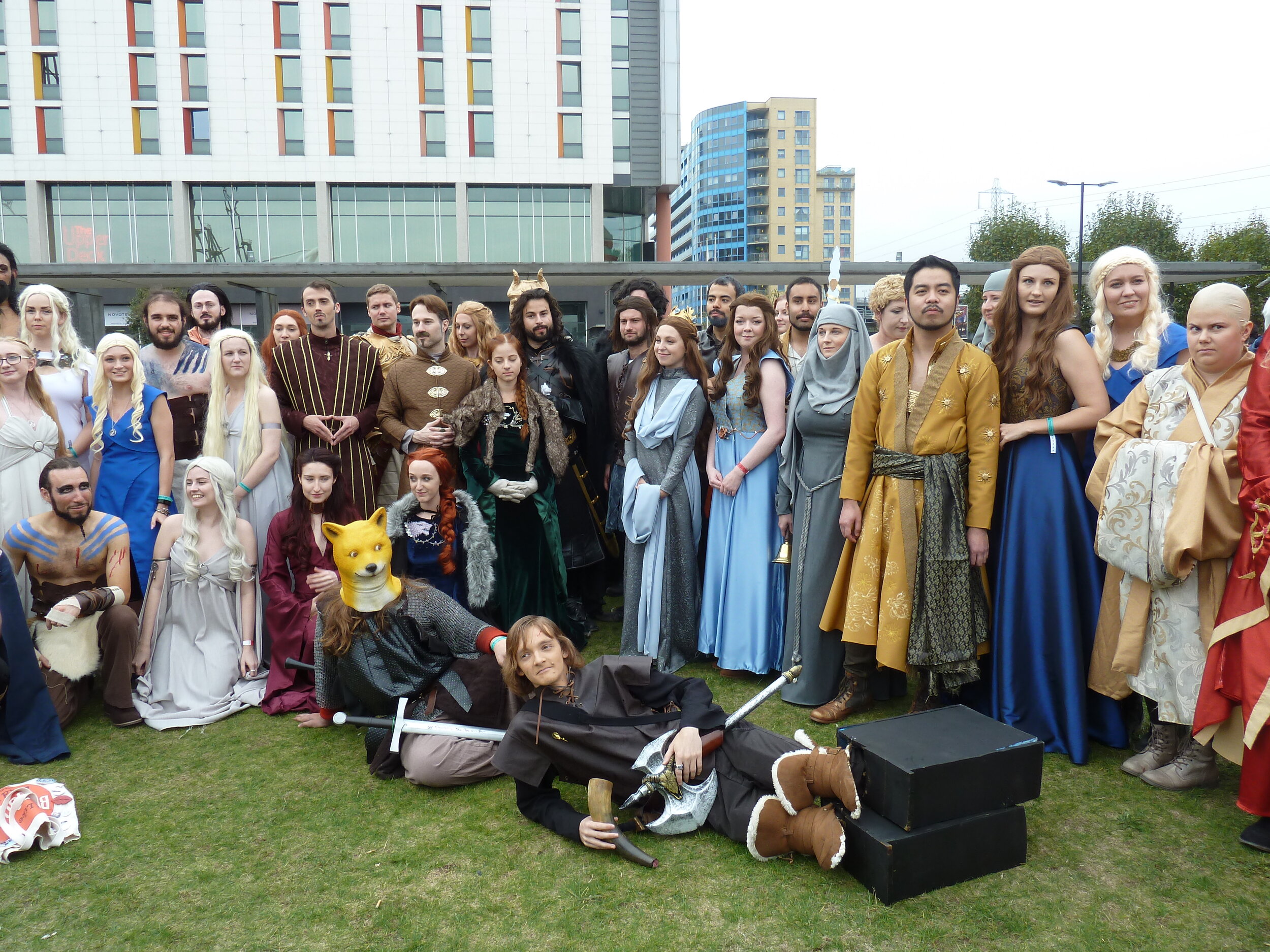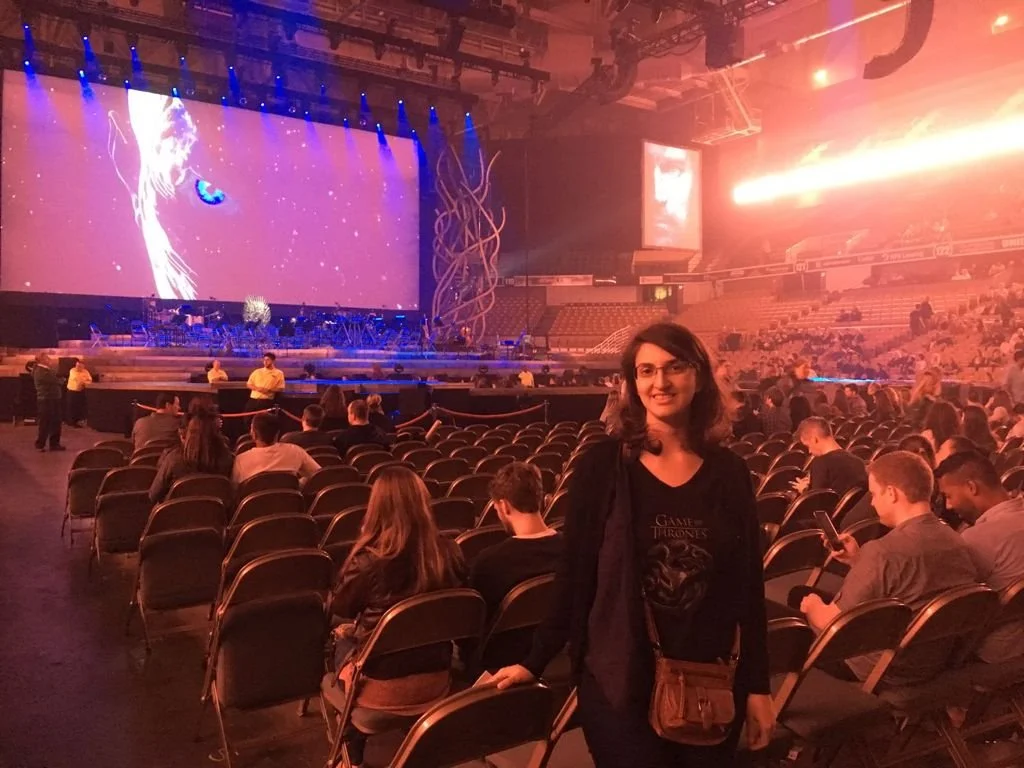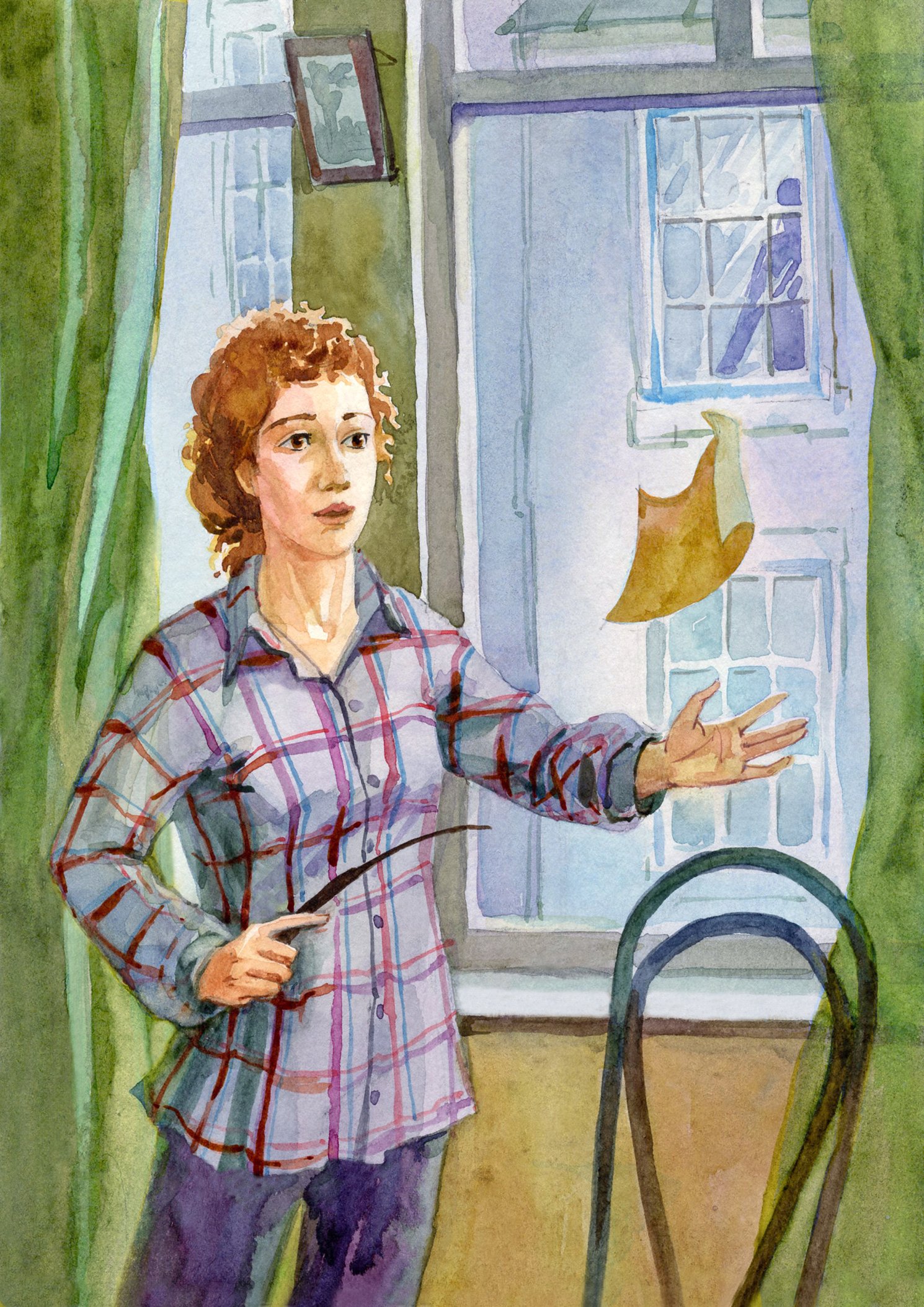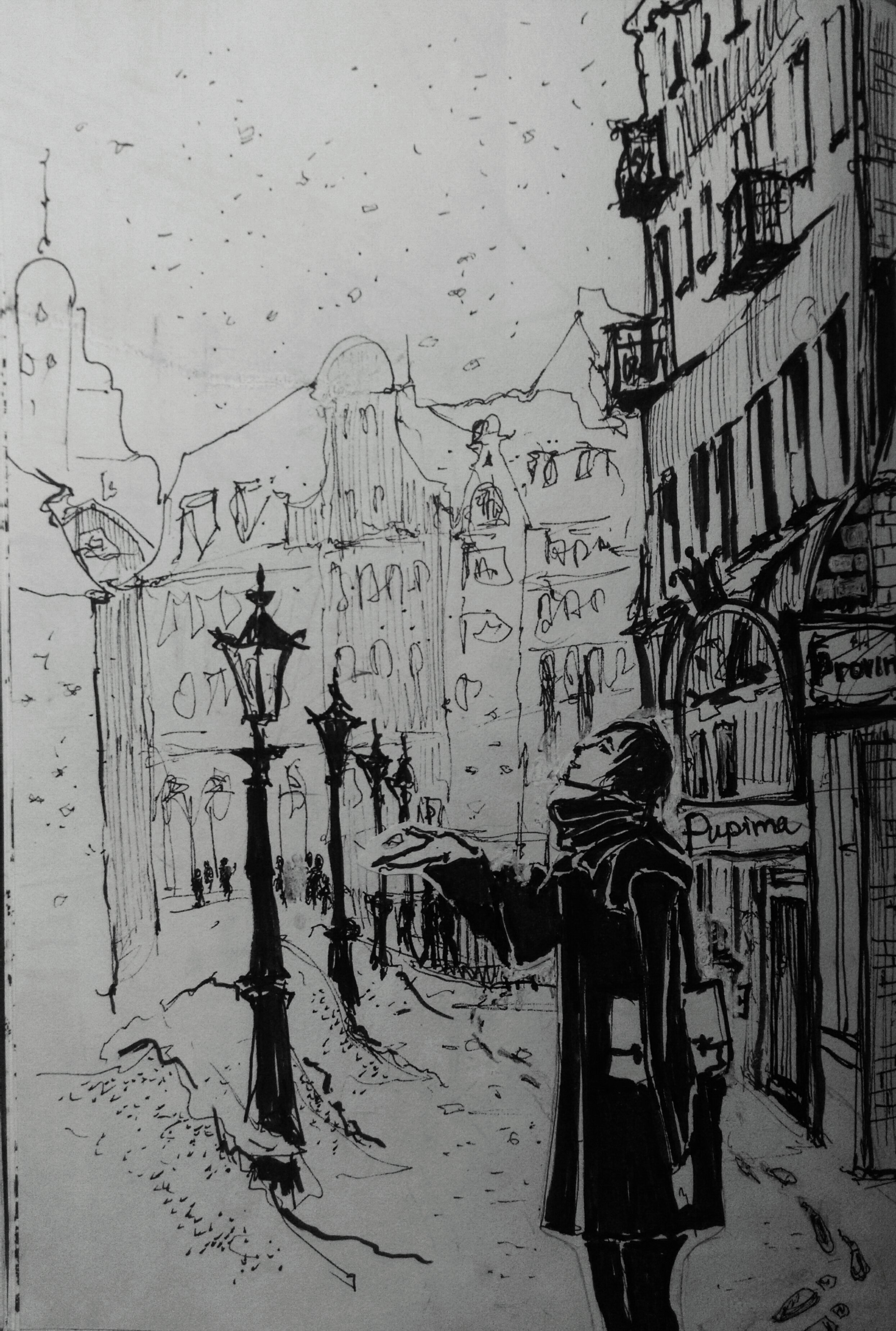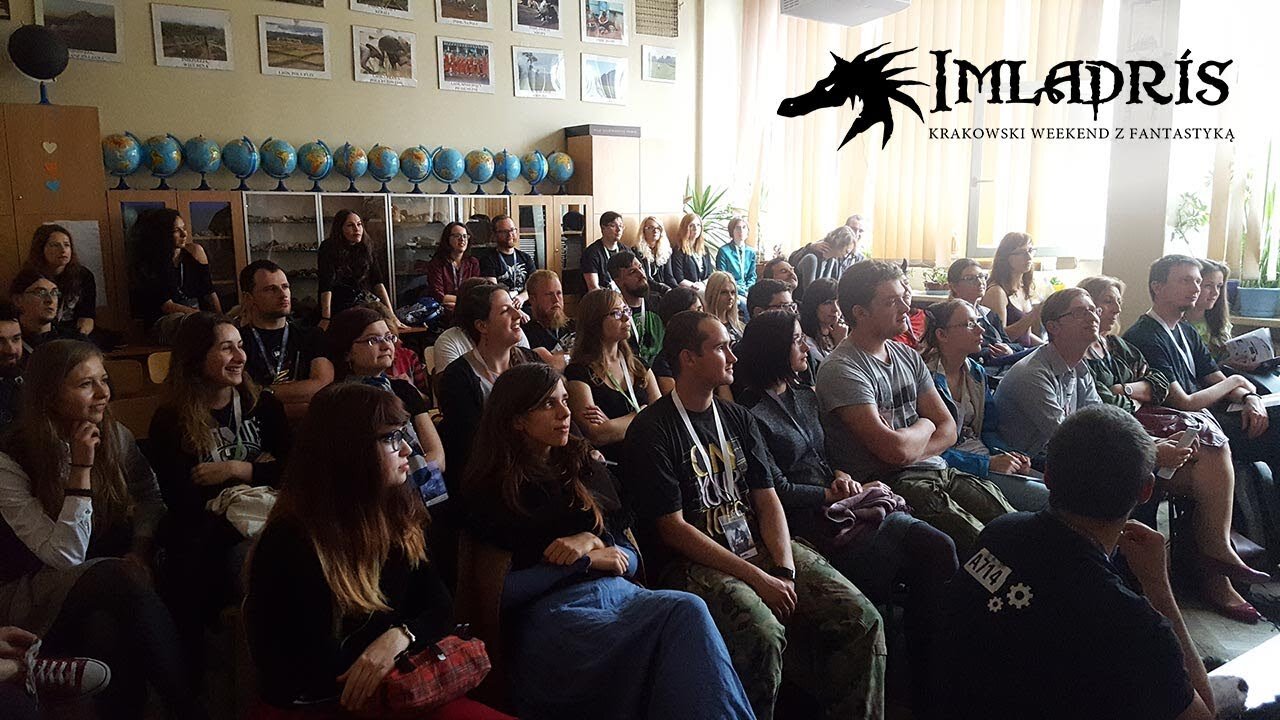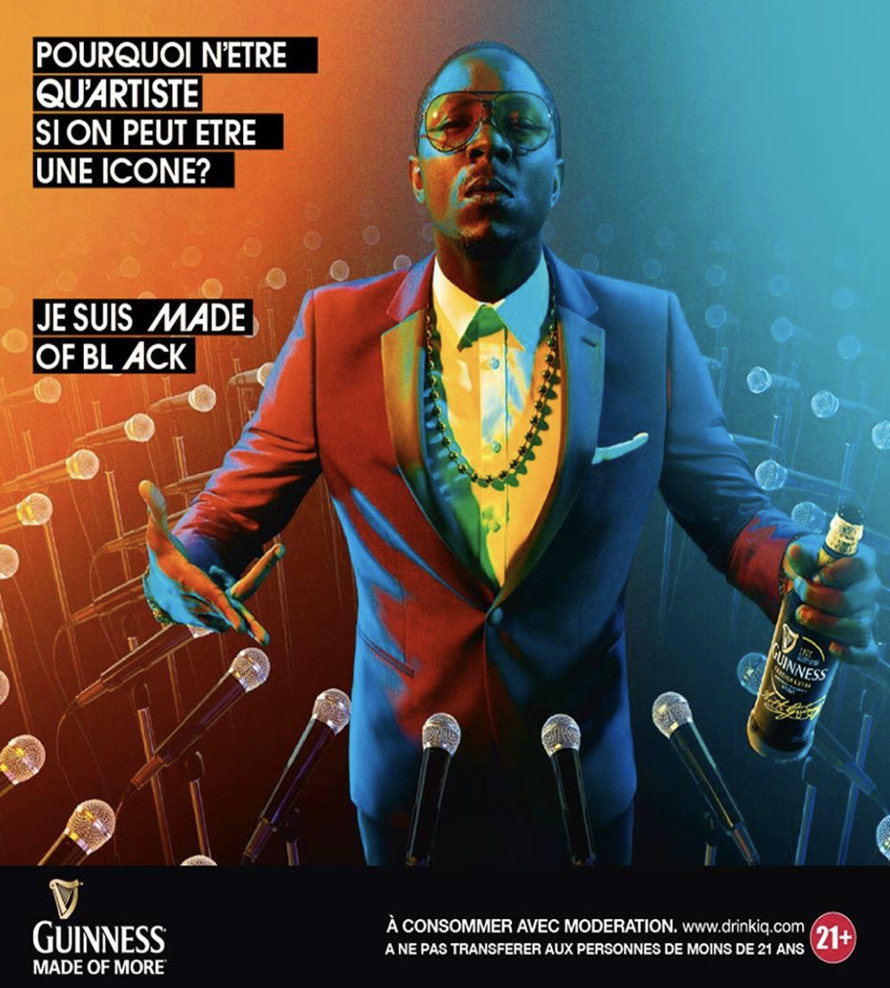Global Fandom Jamboree: Irma Hirsjärvi (Finland)
/"75th Worldcon World Science fiction Convention, in Helsinki in 2017 was the first Worldcon in Nordic countries. It was also the second largest Worldcon ever, since its beginning in 1937. Chairman Jukka Halme smiles with two Hugo statues in his hands."
Irma Hirsjärvi
The origins of fandom in Finland go back longer in history than one could guess. The country’s long history as an autonomous part of Russia from 1809 until 1917, and the strong Nationalist movement of the late 19th century in Europe created the golden age of the arts also in our province. That gave special significance to the artists, musicians and writers of the era, and many gained devoted admirers and followers, even cults, within the small language area that was finally called Finland after year 1917.
Later, in the 1940s and 1950s, the fans of stars of especially Hollywood cinema, TV series and rock’n roll followed international media through newspapers, cinema, magazines, radio and TV as soon as the news were printed or aired. Fandom in Finland was not so a much pejorative expression in the media, but connected rather neutrally to popular culture mainly.
When finishing my Master’s thesis on feminist science fiction in 1992, I was already member of a local Jyväskylä sf society. The early topic of my Ph. D. thesis - reception of science fiction - tell about the still so suspicious nature of fandom studies in our universities around the turn of the century. Still, things had started to change: I finally got the funding for the thesis, boldly about science fiction fandom in Finland, in 2004.
The next year, 2005 Harri Heinonen, from the Faculty of sport and health sciences, University of Jyväskylä, defended his thesis on Everton football fans and Kaarina Nikunen, media reseacher from the University of Tampere hers on TV fans in Finland. Fandom studies had emerged from behind media and reception studies. During the following years, we arranged Fandom conferences and seminars in co-operation.
For me and the other forthcoming fandom researchers the expertise of the Research Centre for Contemporary Culture became essential. In collaboration with Urpo Kovala from the Centre, we have edited books and written articles on fantasy, science fiction, reception, and fandom.
In the early years of this century, fandom research in Finland spread fast to cover literature, poetry, games, sf, fantasy media figures, comics, anime, manga, cosplay etc. I myself published in 2009 my thesis “The mediations of fandom – the networks of the Finnish sf fandom”. In it, I analysed both the activities and the organisation of the fandom, as well as the personal experiences involved in the fandom, in larger cultural contexts such as cultural economy and the publishing branch, or the international dissemination of influences. I looked at the field of values and attitudes connected for instance with debates over gender, religion and politics – as well as debates over science fiction between the fandom and the literary field (one severe debate in the 1950s and another in the 1990s). I used multi sited ethnography (George E. Marcus); different corpuses included such as focused interviews, fan publications, media texts, discussions on the internet and fandom histories. This synchronic approach was supplemented and contextualised by means of a historical account of the arrival and spread of the sf-genre and later its fandom in Finland. I followed the circulation of international influences, also in the organizational practices and the productivity of the fans, as well as the birth and evolution of the utopian spaces in the fandom, which especially was found to be a crucially important motive for this overall feminist fandom in general.
Simply put, I was set to look at the readers and reception of the sf genre but finding places like Aca-fan, I plunged into media and cultural theory. So I ended up following the cultural movement that I was living in myself, too: I looked at the people of small local sf-clubs, then a national network, and finally internationally networking and the emergence of publishers, experts and arrangers of the largest sf event of Europe. The fandom was also a writer’s guild: we wrote ourselves and kept writers’ classes, gave feedback to each other and published, affecting even the established literary critique of Finland. We created the Finnish sf and fantasy researchers’ association FINFAR with its successful international journal FAFNIR. International Finland-based sf writers like Leena Krohn, Johanna Sinisalo, Hannu Rajamäki, Emmi Itäranta were introduced to international fandom through the network. Our fandom went from local to international in 30 years. Now, every fandom seems to be globally networked through new media from its birth.
As part of my doctoral project, I participated the Finnish-Hungarian research project Cult, Community, Identity, funded by the Academy of Finland (in 2006-2008). It connected anthropological cult studies with fandom studies, e.g. Hungarian literary cult phenomena of reburying (yes!) of cultural figures as a means of enhancing one’s political authority, with more cultural studies oriented fandom research. I also collected the Finnish data for the project Youth reading fantasy”, in which researchers from five Baltic countries took part. We had the kids read Ursula K. LeGuins’ Kerastion. I found out, for instance, that only sf-fans found the text ”easy”, instead of ”harsh”, revolting” or ”impossible”. Particip@tions Vol. 3 (2) Article - Irma Hirsjärvi (participations.org)
In Sirkku Kotilainen’s international research project Youth Media Participation I was able to slip in some questions about fandom. However, the most important fandom research experience was my research group getting national funding for the Finnish part of the global World of Hobbit project under the title ”Uses of fantasy”. Our wonderful young postgraduate students also joined the later Game of thrones project. The results were very interesting. This generation of young researchers in different fields and universities continue the previous fandom seminars with their seminars and research on the ”Nerd” phenomenon.
Global or local? Game of Thrones series was aired globally simultaneously, because the fandom wanted to talk about the series, simultaneously, around the world without others being able to make spoilers. That tells us where we are now. Fandom is local, but simultaneously strongly part of global processes. Through new media, it affects global networking the ways we should look at carefully, as Game of Thrones and other global media projects show.
I personally reject the interpretation of deeply religious fandom experience. It really tells very little except the meaningful ties of fandom. Relations between fandom, cultural production, markets and the arts as well as social aspects are more relevant and open fruitful questions. Fandom is filled with serious, even holy experiences, but always in progress, moving and under discussion. In science fiction fandom one constantly meets the idea of utopia said out loud - not in its classical, but in a feminist meaning, and as the ability to be as you are. The core of science fiction literature, for instance, is in sociology, political studies and feminism, even if it is sometimes seen as ”dystopic technology set in the stars”. The biggest change during the last decade is the shift of fantasy towards political or sociological themes. This has become a strong element in media texts like Hungergames and Game of Thrones.
Watching this evening the less than ten people of Jyväskylä science fiction club 42 (of course 42!) I see our local society has not changed very much during these 30 years, even though most of the people have given space to new ones since its beginning. This evening we talked about books, TV series, cartoons, cinema, and planned our little Octoberfest with a modest sf programme to be held in our library. Very local. Still, we also talked about our friends and their doings in Oslo, Denmark, USA as if they were present every day, as if they were part of our community. So our “local” group has turned to be also simultaneously international.
We would have stayed only local, had it not been for the Helsinki fans who in the 1980s arranged Finncon, one of the largest sf-events in Europe, by means of their influences and contacts to England and Sweden. We in my city Jyväskylä had not the economical assets to do so, until Jyväskylä Arts festivals heard from us, the ”futuristic sf people” (sitting in a pub once in a month and arranging Star Trek events) and offered us money to arrange sf/fantasy/horror-seminars. That helped us to arrange seminars and finally get Finncon to be held also in our city. Then, that helped us to apply funding from the Ministry of Education by starting the Finncon society together with other societies, and after that we were able to invite more international guests, arrange bigger events, start a research programme, support publishing and give a start to the huge Finnish anime fandom, consisting of small local societies like ours. Furthermore, fine local funding of culture, the national respect of literary culture, excellent education, and actually also the safe social network of our welfare state were all in the background of these organizational practices.
However, behind the personal meaning making processes was the joy of reading and discussion of the texts, like this evening in a local pub, where we still meet once a month. Most of the people I interviewed for my Ph. D. thesis learned to read at a very early age, often starting at the age of four. The love towards literature and fantastic texts seems to be a desire - including the joy of sharing. This has been the driving force for our members when they were asked about their motives for spending so much time working for others, in our city, at the National Finncon or in other countries, other conventions, with strangers.


